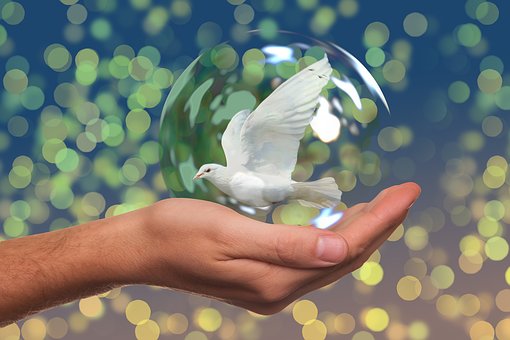With recent events in the United States highlighting the deep political divisions and racial disparities in our country we thought that it would be an appropriate time to focus this blog post on Montessori’s educational philosophy on Peace Education. Peace Education can be defined as:
“Anything that teaches anyone how to be more peaceful with themselves, others, and the world”
Blanco, Erica “Incorporating Peace Education in the Montessori Classroom.” Montessori Views, MontessoriViews an ETC Montessori Company, 2020
(A link to this article is included at the end of this post.)
Peace Education in the Montessori curriculum is under the umbrella of Cosmic Education. Cosmic Education is one of the cornerstones of Montessori philosophy. In broad terms, it is the concept of the connection between humans and the universe that we are but a small part of. For a more in-depth look at the concept of Cosmic Education, there are links at the end of this post.
Peace Education, like most other curricular areas in the Montessori classroom, begins in the primary classroom with children ages 3-6. Maria Montessori observed that the young child’s “universe” really only consists of themselves and later on, their immediate family.That being said, you can begin teaching peace to a child at the primary level by talking to them about how they are feeling, teaching them to understand and own their feelings, learning that others have feelings also and that their actions affect their own feelings and the feelings of those around them. Peace lessons at this age are very concrete and often happen within a “teachable moment” that arises as a result of student interactions in the classroom. In addition, the concepts of respect of self, others and the environment are introduced at the primary level in very basic and concrete ways. Primary peace lessons are initiated with the lesson called the Peace Rose. The Peace Rose is used to introduce the children to the way a calm, respectful, collaborative conversation takes place between people who are not in agreement. During the Peace Rose conversation, only the person with the rose may talk. When the first speaker is done, then the other person takes the rose and has a chance to talk. This lesson helps young children learn to listen and communicate peacefully. The adult must help model this type of communication to start with, but after the children understand the process, you will observe that the children begin using the Peace Rose strategy to collaboratively solve disagreements on their own.
As the child grows, moving to lower and upper elementary, their concept of the universe grows beyond just their immediate family, to include others in their own community, state, country, and beyond. As the child’s consciousness expands, you can introduce the concept of peace on a larger scale that includes an understanding of what their view of their ever-expanding community includes.
Children are also taught about famous peacemakers and peacekeeping organizations from around the world. Nelson Mandela, Martin Luther King, Mother Teresa, Gandhi and many others are studied in the Montessori elementary classrooms. In alignment with the Montessori concept of starting with a big idea and then narrowing in as the child gets older, students are first given just an overview of each of the world peacemakers and peacekeeping organizations. As students continue their Peace Education studies, they learn about the history, lives, events, influence and outcomes of the work of these peaceful leaders and organizations in reference to the concept of world peace. Students may even get involved in their own projects and peace advocacy endeavors as part of their Peace Education studies.
By teaching the concepts of peace, collaboration, understanding, tolerance and unity starting in the primary years, Montessori education deliberately and thoughtfully fosters students’ ability to be a peacefully-minded, inclusive, and globally-productive adult members of modern society. As recent events have blatantly highlighted, the need for those skill sets and practices has never been greater. Join us in using the power of Montessori’s Peace Education curriculum and practices to help create a more peaceful, tolerant, inclusive, united world for us all to live in.
As Maria Montessori says, “Education is the best weapon for peace.”
Peace Education Resources:
Peacekeepers Books by Montessori Services
Montessori Print Shop Peace Materials
Peacemakers/World Changers Card Set
Incorporating Peace in the Montessori Classroom Article
Cosmic Education Resources:
Montessori Mindfulness Article
Preparing for Cultural Diversity: Teacher Resources
Supporting Diversity in the Classroom


